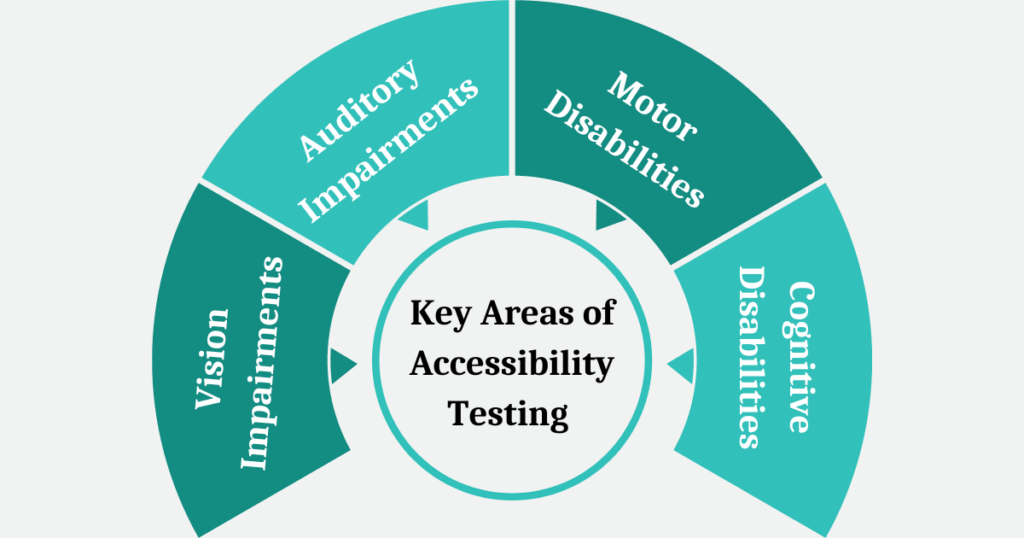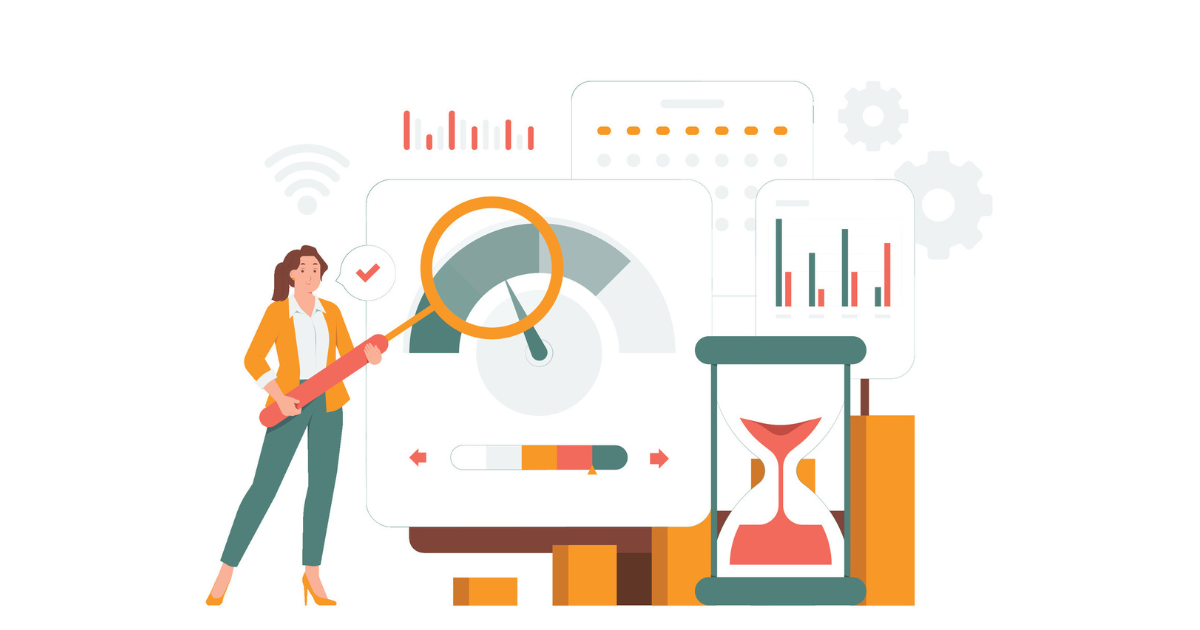Organizations creating software products for diverse user bases need to ensure their products are accessible by all regardless of ability - this is where accessibility testing comes into play, by identifying barriers which prevent people with disabilities from engaging with software applications and thus ensure products truly cater for user friendliness for all.
Artificial intelligence (AI) advances have dramatically transformed accessibility testing. Companies can meet accessibility standards more easily without compromising quality or development speed; with AI making this process more effective.
In this blog we explore its importance, AI's place within this process and its use for making software more inclusive.
What Is Accessibility Testing?
Accessibility testing refers to ensuring software applications, websites, and digital content is accessible for people living with physical and cognitive impairments such as visual, auditory, cognitive or motor.
The goal is to create an inclusive user experience which meets the needs of all users regardless of physical or cognitive capabilities.
Key Areas of Accessibility Testing

Accessibility testing includes several essential areas, including:
- Vision Impairments: Ensuring content can be read easily for users with vision issues by offering screen reader compatibility, sufficient color contrast and scalable fonts is of vital importance for accessibility purposes.
- Auditory Impairments: Offering audio content as alternatives in text form such as subtitles and captions on videos.
- Motor Disabilities: Enabling navigation via keyboard shortcuts or assistive technologies so users with motor disabilities can engage with software without using mouse/touchpad to do so is critical in meeting their needs.
- Cognitive Disabilities: Ensuring language and interface design is clear, concise, and user friendly without confusing or overly complex navigation features.
Accessibility testing serves the goal of verifying software adheres to established guidelines such as those laid out by Web Content Accessibility Guidelines (WCAG), Americans with Disabilities Act (ADA), or international standards.
Traditional accessibility tests may be time consuming and complex when conducted manually - this is where AI comes into its own and makes an immediate and positive contribution.
Importance of Inclusivity in Software Design
Inclusivity is central to software design: creating products which everyone, regardless of ability or disability can utilize and enjoy using. Not only can inclusive designs benefit people with disabilities; this approach enhances overall user experiences.
Why Inclusivity Is Important:
- Legal Compliance: Many nations have laws mandating digital accessibility; failure to abide can result in legal action, fines and reputational damage for failing to do so.
- Accessibility Can Increase User Base: By making sure your software is accessible, it opens it up to more of the target market - including individuals living with disabilities.
- Enhance User Experience: Accessibility features can often benefit all users, not only those with disabilities. For instance, subtitles on videos may help in noisy environments while keyboard shortcuts improve efficiency for all.
- Corporate Social Responsibility: Prioritizing accessibility demonstrates your company's dedication to inclusivity and equal opportunity, thus reinforcing your values as an organisation.
Prioritizing inclusivity means all users, regardless of circumstance, have an enjoyable and fulfilling experience using your software.
Artificial Intelligence's Role in Accessibility Testing
Artificial intelligence has revolutionized accessibility testing by automating many aspects of its process and offering real-time insights that make testing faster, more accurate, and efficient. Here's how AI-powered testing works in practice.
Automated Compliance Checks
It's One of the key advantages of AI for accessibility testing is its capacity to perform automated compliance checks against established accessibility standards such as WCAG and ADA guidelines, with multiple elements assessed at once - for instance:
- Contrast Ratios: AI tools can detect automatically whether the contrast ratios between text and background colors meet accessibility guidelines.
- Alt Texts: AI can ensure all images and visual elements have appropriate alt texts for screen readers to interpret for visually impaired users.
- Keyboard Navigation: AI-driven tools can simulate user behavior to ensure all elements of an interface can be reached using keyboard navigation and assistive technologies.
- Form Labels: AI ensures all forms are labeled correctly to facilitate navigation by users with disabilities.
Automating these checks helps ensure compliance from the outset of development projects, giving developers time to identify and fix any potential issues early.
Identifying Accessibility Issues in Real Time
AI can identify accessibility issues as software is created or updated - in real-time! AI also has the capacity to detect and flag potential accessibility issues as software is created or updated, making real time progress monitoring even easier than before.
Here's how this works:
- Real-Time Scanning: AI algorithms can conduct real-time scans of user interfaces to quickly identify potential accessibility problems as they emerge, such as when developers add buttons without providing alt text for screen readers - this system will immediately flag it!
- Contextual Recommendations: AI tools don't just identify issues; they also offer solutions on how to remedy them. For instance, if text and background contrast ratio is too low, AI may suggest alternative color combinations which meet accessibility standards as solutions.
- Continuous Monitoring: Artificial intelligence allows for continuous evaluation of software's accessibility over time, keeping track of any updates or features which might compromise accessibility and keeping track of them all.
By taking preventive steps and staying compliant as it expands, this proactive approach to accessibility issues allows software to remain accessible as its user base expands.
Machine Learning for Adaptive Testing
AI tools may use machine learning to adapt accessibility testing based on real user behavior and feedback, by monitoring how real users interact with software applications.
AI can identify any areas where accessibility could be improved before adapting testing criteria accordingly.
AI can detect when users are repeatedly having difficulty using one part of an interface and provide suggestions such as adding keyboard shortcuts or simplifying its design for improved usability.
With such an adaptive approach, software remains accessible even as user needs and behaviors change over time.
Book a Demo and experience ContextQA testing tool in action with a complimentary, no-obligation session tailored to your business needs.
Conclusion: Enhancing User Accessibility through AI
With digital media constantly expanding and evolving, software accessibility must become both legally and morally essential.
Companies using artificial intelligence as part of the testing process can make their products more inclusive while increasing efficiency by eliminating manual testing time requirements and saving valuable resource time and costs associated with manual tests.
AI-driven accessibility testing tools not only automate compliance checks but also offer real-time feedback and adaptive insights for developers to address any early issues, while keeping accessibility standards compliant and providing users with positive, seamless experiences.
This ensures the final product delivers both accessible standards compliance as well as provides positive, seamless experiences to its end-users.
AI's role in accessibility testing will only increase in the future, making it an essential asset to organizations committed to designing user-friendly software products that support inclusion.
By employing this powerful tool, businesses can ensure their digital products adhere to high accessibility standards while encouraging inclusivity that benefits both their users and business alike.
Also Read - How AI-Driven Bug Detection Is Reshaping Software Quality Assurance
We make it easy to get started with the ContextQA tool: Start Free Trial.
